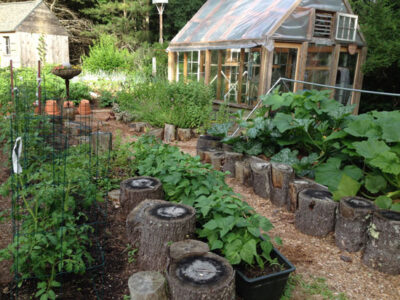While clearing land for additional garden space, we stockpiled a tremendous amount of branches and pine logs. We wanted more than a vegetable plot with straight lines, so we used short pine logs to outline our permanent garden beds.
In addition to being funky, functional and free, the scrap wood offers habitat for insects, frogs and other beneficial creatures. With the abundance of branches, we created support tipis for climbing crops, such as peas.
Bob Fairbanks
Kennebunkport, Maine
Suggested Video
Suggested Podcast
Gardening Problems and Solutions
Hear from fellow gardeners on their gardening problems and solutions and experiences, and glean some new gardening practices.
Planting Vegetables for Beginners
Learn how to grow a vegetable patch for beginners! Planting vegetables for beginners can be daunting but there are some easy tips and tricks to help them grow.
Gardening With Kids: Getting Them Started
Explore the world of plants with your child with Matt Biggs as he discusses gardening with kids, interesting plant activities for kids, and more.
Related Content
Permaculture Planning
Before you pick up a trowel, take time to map out your resources, needs, and desires to help you successfully establish a permaculture property.
How to Grow Watercress Indoors
Learn how to grow heirloom watercress at home, and skip the expensive store-bought variety.
DIY Cold Frames to Grow More Food
Sow seeds in simple frames to add more than a month to your spring garden season.







